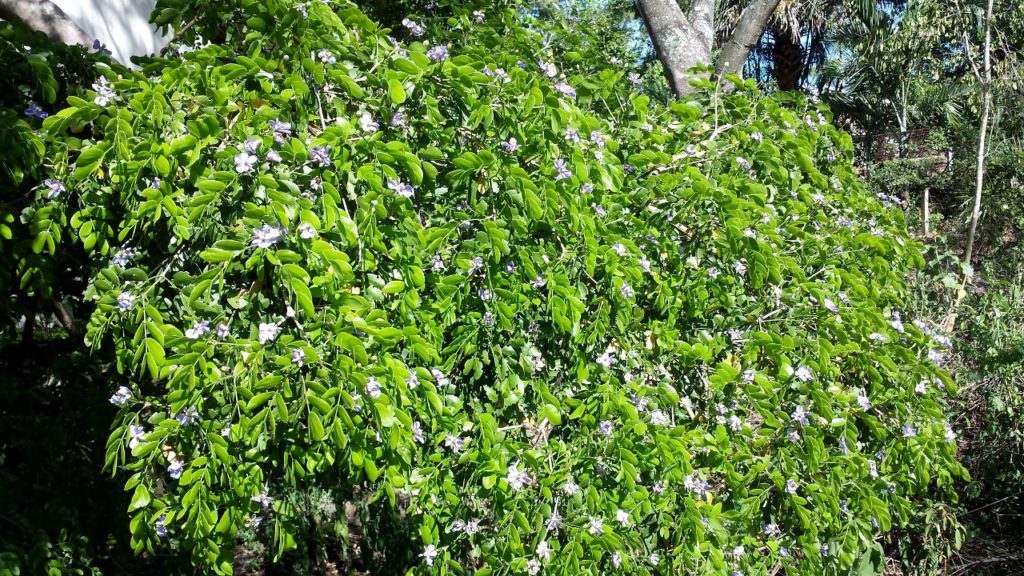Lignum Vitae
Guaiacum sanctum
Lignum Vitae is native to and endangered in the Florida Keys. It is a small tree with very hard wood that withstands hurricanes easily. The growth is more wide than tall and can reach 20 or more feet overall.
The one inch deep blue flowers are followed by a one inch round yellow pod that contains black seeds covered by a deep red aril or leathery coating. These dangle from the pod when ripe. The whole plant can be covered in red and yellow during this fruiting time. The lyside sulphur butterfly, of the Florida Keys, larvals on this plant and catbirds eat the fruit.
Lignum vitae can grow in dry soils with some organic matter up to Palm Beach County and will tolerate some salt air, yet no salt water flooding. It is surprisingly tolerant of cold air down to near freezing.
Lignum vitae has a trunk like a bonsai and can live for thousands of years. The wood is full of resin and was once used for the bearings of boat propeller shafts due to its self lubricating properties. Growth rate is about two feet a year. The related Creosote Bush of the American deserts can live for 11 thousand years or more, click for more info.
I love to use this tree near the entranceway to the homes I landscape. Just take out that stupid Pygmy Date Palm that developers put in front of all new homes during the 1980’s and plant a Lignum Vitae in it’s place. Plant Quailberry under it and Key Thatch, Silver Palm, Joewood, Rhacoma, Coontie and other Keys plants near it; but don’t crowd it. This will be the most beautiful plant on your property and must not be hidden by other plants.
